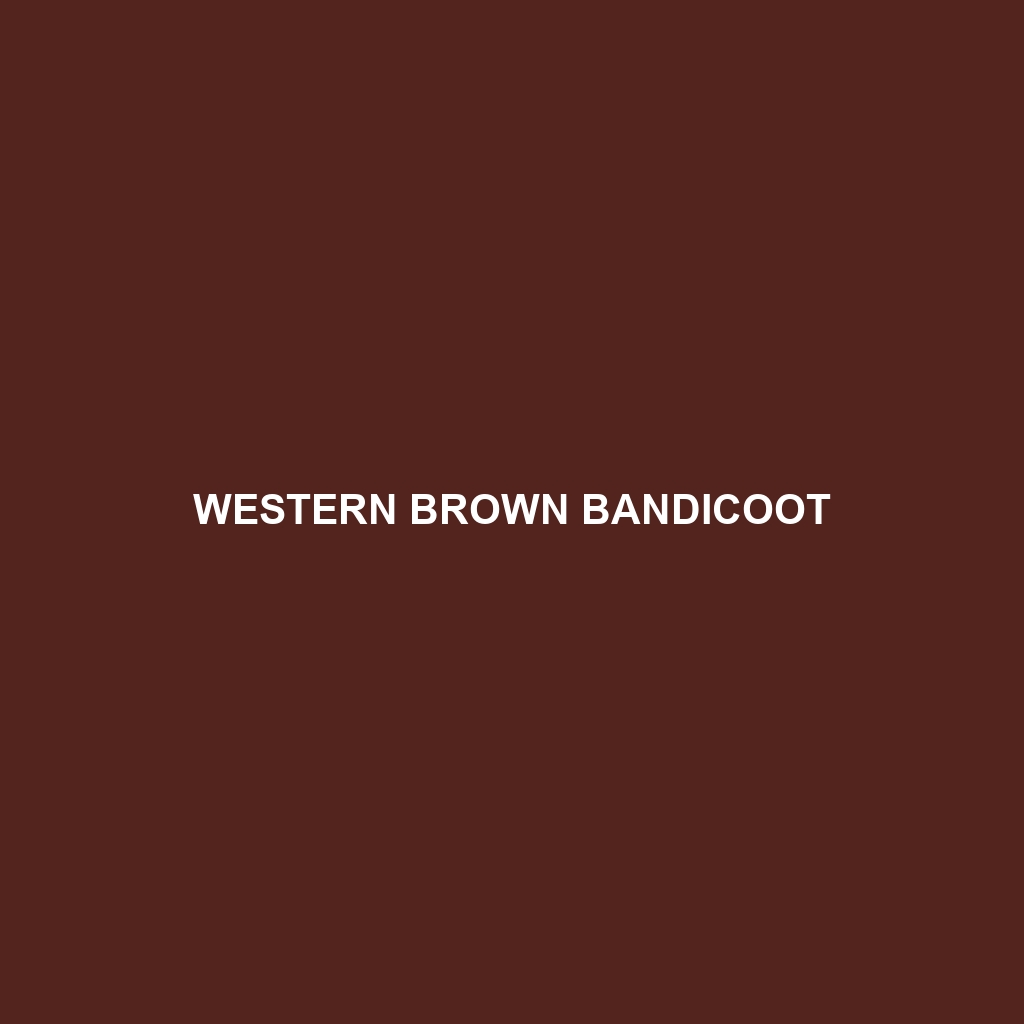Western Brown Bandicoot: A Comprehensive Overview
The Western Brown Bandicoot (Isoodon obesulus fusciventer), also known as the Quenda, is a small, nocturnal marsupial native to the southwestern regions of Australia. Characterized by its compact body, pointed snout, and coarse fur, the Western Brown Bandicoot plays a crucial role in the ecosystem as both a predator of invertebrates and a prey species for larger animals. This elusive creature is known for its burrowing behavior and its ability to thrive in various habitats.
Physical Characteristics:
Size: Adults typically measure between 28 to 36 centimeters in body length, with a tail length of approximately 10 to 15 centimeters. They generally weigh between 500 to 1,500 grams.
Coloration: The fur of the Western Brown Bandicoot is predominantly brown, with variations that may include shades of grey and reddish-brown. The underbelly tends to be lighter, often appearing creamy or white.
Special Features: Notable for their pointed snout and rounded ears, these bandicoots have strong hind legs adapted for digging and a prehensile tail that aids in balance and carrying nesting materials.
Behavioral Traits:
Social Interactions: Western Brown Bandicoots are primarily solitary animals, coming together only during the breeding season. They communicate through a series of hissing or grunting sounds.
Feeding Habits: Omnivorous by nature, their diet includes insects, larvae, fungi, roots, seeds, and small invertebrates. They use their sharp claws to dig for food, leaving characteristic conical holes in the ground.
Ecological Roles: As opportunistic feeders and prolific diggers, Western Brown Bandicoots help aerate the soil and disperse fungal spores, contributing to the health of their ecosystem.
Habitat:
Preferred Environments: These bandicoots inhabit a range of environments, including woodlands, heathlands, and shrublands. They prefer areas with dense undergrowth that provides cover from predators.
Shelter: They construct nests made of grass and leaves in shallow burrows or in natural depressions in the ground.
Adaptations:
Nocturnality: Their nocturnal habits help them avoid daytime predators and reduce water loss in arid climates.
Burrowing: Their strong forelimbs and claws are well-adapted for digging, allowing them to create secure burrows for shelter and nesting.
Dietary Flexibility: Their omnivorous diet enables them to adapt to various food sources, making them resilient to changes in food availability.
Conservation Status:
Current Status: The Western Brown Bandicoot is classified as Near Threatened by the IUCN Red List due to habitat loss, predation by introduced species such as foxes and cats, and competition with other small mammals.
Conservation Efforts: Efforts to protect this species include habitat restoration, predator control programs, and the establishment of protected areas.
Fascinating Fun Facts:
Unique Reproductive Traits: Female Western Brown Bandicoots have a short gestation period of about 12.5 days, one of the shortest of any marsupial. They can produce several litters each year if conditions are favorable.
Ecological Engineers: By digging for food, they inadvertently turn over the soil, which helps in seed dispersal and promotes plant growth.
Historical Significance: The Western Brown Bandicoot was once more widespread but has seen a significant reduction in its range due to European settlement and land-use changes.
By understanding the various attributes of the Western Brown Bandicoot, we can better appreciate their role in the ecosystem and the importance of conservation efforts to ensure their continued survival.
